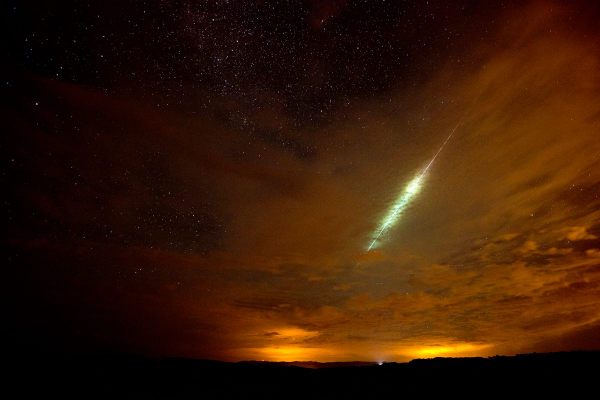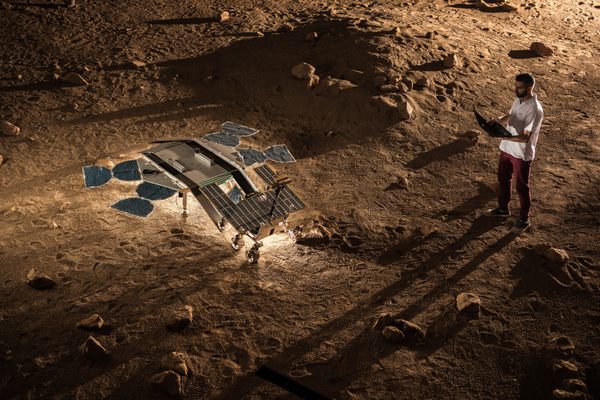Why Does This Picture From Mars Look Like a Riverbed on Earth?
A familiar sight, millions of miles away.

Picture a the shallows of a gently flowing stream, or a bathmat meant to evoke one, and you might settle on something that looks a lot like this—a swath of relatively uniform, smooth, round pebbles against smaller grains of sand. Take a closer look at this one, though, and you’ll notice what’s missing. There are no ripples or minnows or strands of algae. That’s because this image, recently shared by NASA, was snapped on Mars.
NASA’s Curiosity rover landed at the Gale Crater on the red planet in August 2012, and has been rolling around Mount Sharp—which rises 3.4 miles from the depression’s floor—ever since. So far, the rover has covered a little more than 12 miles. Scientists were intrigued by this region, in particular, because the mountain’s thick layers could offer a glimpse into deep time and help reveal what the planet was like several billion years ago—and possibly hold clues about whether it could have sustained life.
Orbiting satellites had detected clay minerals in this part of the mountain, a region known as Glen Torridon. Since Curiosity has been there, researchers have gotten a closer look. The pebbles are tiny mudstones, says Valerie Fox, a postdoctoral researcher in planetary science at the California Institute of Technology, and the co-lead for the Mars Science Laboratory Mission science campaign at Glen Torridon. “All the materials we’ve been seeing, more or less, in Mount Sharp are the products of ancient lake beds,” she says. Many, many, many years ago, the finest material settled out of the water column and gathered on the bottom, she adds. Then, “over eons, it turned to rock.”

Curiosity keeps coming across tiny stones like these. The largest one in the image, all way on the left, is about 3/4 of an inch. The round, blueish one with a hole in it, looking almost like a barnacle shell, is just 1/16 of an inch. Collectively, these tiny bits of evidence (and the giant mountain they reside on) help tell a big story about the planet’s past. “We’re in this clay-bearing lake environment at the moment, but when we start looking uphill, we start seeing more evidence for minerals and salts that form in conditions where it’s drier, and where water is leaving. The very top of the mountain is anhydrous—it doesn’t look like it has minerals that formed with water really at all,” Fox says. The mountain seems to track the evolution of our planetary neighbor, from its infancy three or four billion years ago, when it swam with lakes and rivers possibly similar to early Earth’s, through to its arid present. “We’re seeing that progression over millions and billions of years recorded in these rocks,” Fox says.
Researchers aren’t yet sure exactly how the pebbles came to look the way they do, but Fox says that, as on our own planet, water or wind probably played a role. “On Earth, we see really round pebbles in rivers and streams because the water is carrying them down and bashing the angular bits off until you end up with this nice round shape,” she says. Wind smoothes and sculpts sharp edges, too. The scientists are also investigating whether some of the smaller ones could have been impact spherules, formed when a collision melted rock then flung it into the air, vaporized it, and froze it, causing it to fall as “basically raindrops of rock,” Fox says. “It’s possible that in this image we see evidence for a couple of different of these processes, but it’s definitely a work in progress to understand what exactly is going on.”
While researchers continue to investigate the pebbles, it’s cool to think about just how familiar they look to us because, all in all, they’re not so different from what we might find underfoot. “There’s nothing terribly alien here,” Fox says. “Except that it’s on Mars.”




















Follow us on Twitter to get the latest on the world's hidden wonders.
Like us on Facebook to get the latest on the world's hidden wonders.
Follow us on Twitter Like us on Facebook